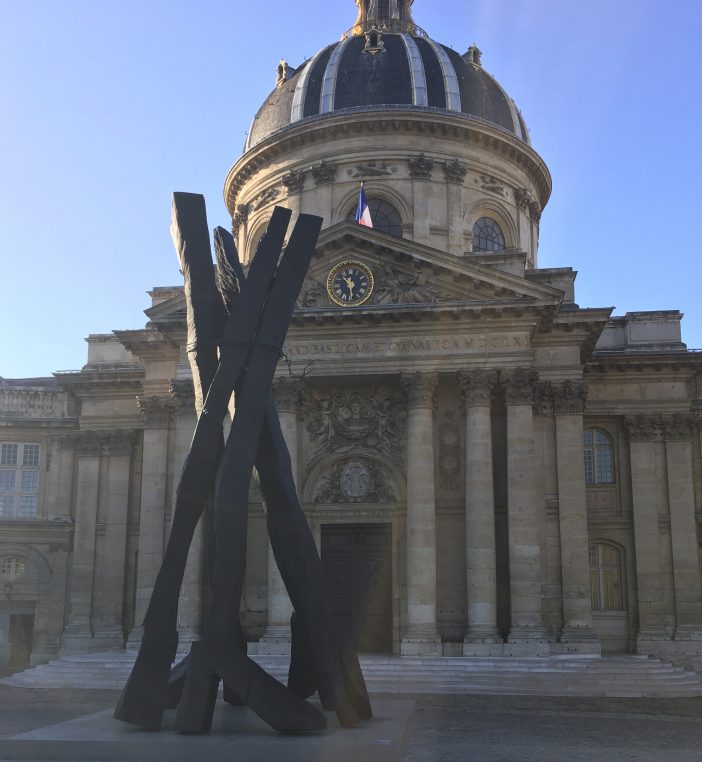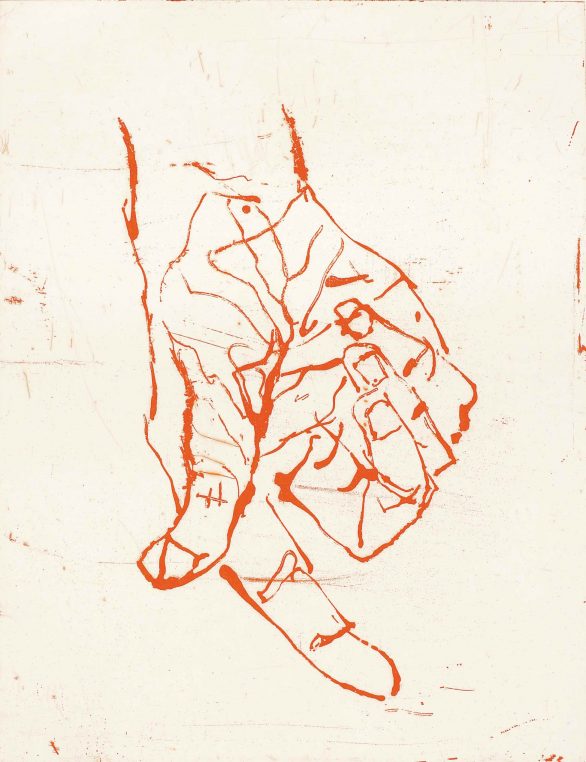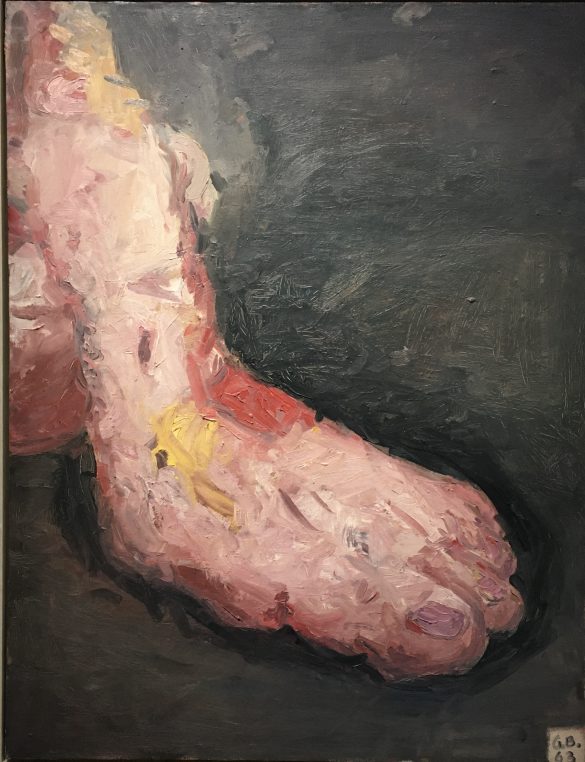I had seen his majestic sculpture in front of the Institut where he was accepted on October 27 as a member of the Académie des Beaux Arts, and was afraid to be disappointed by his large exhibition at Centre Pompidou and it was exactly the reverse. I was stunned by the power of his paintings and loved almost all of them, dancing from one room to the other with excitement and joy. Georg Baselitz, (b.1938) was first trained in the German Democratic Republic and created a scandal in West Berlin in 1963 with his sombre iconography peopled by myths and legends. From the first painting in the show dedicated to Antonin Artaud in 1962, to the last period painted in 2019, the large retrospective of sixty years of work, is a festival of talent and colors. The show is less crowded that the Georgia O’Keefe and you can visit it without booking.

Zero Dom, 2021, Bronze, courtesy Galerie Thaddaeus Ropac is visible in front of the Institut until March 7
“I was born in a destroyed order, a destroyed landscape, a destroyed people, a destroyed society. And I didn’t want to reestablish an order… I was forced to question everything, to be “naïve”, to start again.” When he first arrived in West Berlin, Baselitz worked on a cycle with a provocative title “Ein Neuer Typ” now better known as “Helden” (heroes). It presents partisans, painters and poets, survivors and the wounded returning from the war. “Die Grossen Freunde” (The Great Friends) is a manifesto-picture that expresses all the tragedy of Germany with two wounded survivors standing in a decor of ruins. The painting has come from the Ludwig foundation in Köln.
A large part of the exhibition is devoted to trees and workers in the forest just after a long wall of violent pictures of wounded and amputated red feet. They are inspired by Géricauld’s “Raft” and also by Chaïm Soutine’s and Rembrandt’s bloody pictures, two painters Baselitz discovered in 1960 an 1961 when he travelled to Paris and Amsterdam while still living in East Germany.
Then start his series of paintings upside down which will become his trademark. His birch from 1970, his blue Eagle from 1972 painted with his fingers, the Dresden Worker in 1969, and the incredible “Fertigbetonwerk”, the factory for concrete are all stunning paintings hung in the same large room. Later in the show his wood sculptures presented at the 1980 Venice Biennale and yellow paintings of “Frau am Strand” (woman on the beach) are also spectacular. They transform the last rooms of the exhibition into a fireworks of color and shapes with a last bronze “Hibernation” which looks like burnt wood.

“Wagon-lit mit Eisenbett”, 2019, Centre Pompidou? musée National d’art moderner Paris, Gift of the artist, 2021
The last room is nostalgic with works suggested by his fragile body and his wife Elke portrayed in purple on her iron hospital bed. At 83, the artist keeps painting the evolution of his life and lives between Germany and Italy.
You can further the visit with Galerie Catherine Putman, 40 rue Quincampoix just behind Centre Pompidou where prints are available for 2 800 t 12 000€.

Georges Baselitz “Eine Hand ist keine Faust IV”, 2019, eau-forte et aquatinte, 12 prints at Galerie Catherine Putman
The Retrospective at Centre Pompidou is on until March 7. At galerie Catherine Putman until January 15.
Share this Post
The retrospective at Centre Pompidou is until March 7 and the exhibition of prints at Catherine Putman is until January 15 at 40 rue Quincampoix.



